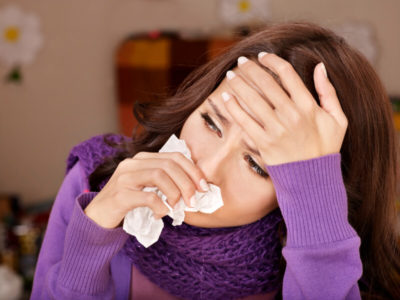The Anatomy of the Immune System

The body’s immune system is made up of individual parts which work together to find and destroy bacteria, viruses and disease. Each part of the immune system must be functioning properly in order to detect and differentiate the unhealthy organisms from healthy tissues.
Together, each of the six individual parts of the immune system work to keep the person healthy and free from disease, bacteria, viruses, and fungi like Candida albicans.
1. Bone Marrow
The primary point of production of the cells of the immune system, bone marrow is a substance found inside the bones primarily in the hips and thighs. Bone marrow is made up of white blood cells, red blood cells and platelets.
- Information about Bone Marrow Donation from Mayo Clinic
- National Library of Medicine information on bone marrow diseases.
- American Cancer Society guide to Stem Cell Transplant.
- National Cancer Institute provides information on bone marrow transplantation & peripheral blood stem cell transplants.
- University of Maryland Medical Center information on Myeloproliferative disorders.
2. Thymus
The thymus is the organ responsible for T-cell maturity and release. This is where the T-cells which are critical to the adaptive immune system develop self-tolerance before being released into the body’s system.
a) Anatomy: The thymus is responsible for producing a particular type of white blood cell known as the T-cell. It can be found just below the chest bone.
b) Histology: the thymus consists of lymphoid tissues and lymphocytes. Two distinct structures, the cortex and the medulla work to push lymphoid cells from maturity into circulation within the body.
- University of Washington provides information on how T-cells recognize nerve fiber insulators.
- University of Michigan Medical School learning resources on Lymphatic System and thymus histology.
- Georgetown Hospital System anatomy of the thymus.
- Perelman School of Medicine information on T-Cell therapy for Leukemia treatment.
- University of Arizona Biology Project on cell biology.
3. Lymph nodes
Lymph nodes are part of the lymphatic system that can be found widely distributed throughout the entire body. They are responsible for trapping foreign particles and filtering pathogens found within the body.
a) Structure: A fibrous capsule extends from outside the lymph node to the inner substance which includes the cortex and medulla to make up the lymph node.
b) Cortex: B cells arranged as follicles make up the outer cortex and the inner cortex is made up of t-cells.
c) Medulla: the medullary cords are made up of plasma, macrophages and B cells. The medullary sinuses separate the medullary cords and contain histiocytes and reticular cells. The large blood vessels, sinuses and medullary cords make up the medulla.
d) Passage of lymph: lymphatic circulation begins in the nodes and passes through the marginal sinus into the cortical sinuses. The passage of lymph continues until the lymph reaches the medullary sinuses and then exits the efferent lymphatic.
- Foundation Press overview of the lymph nodes.
- The Structure of the Lymphatic System an overview and closer look at lymph nodes.
- Stanford School of Medicine video overview of lymph node examination.
- Harvard Medical School details on lymph node biopsy.
- Lymph node examination step by step guide.
4. Spleen
Located in the upper left abdominal section, the spleen is structured similar to an oversize lymph node and works as a blood filter.
a) Structure: made up of two distinct parts known as the red pulp and the white pulp, the spleen filters foreign bodies out of the blood keeping the person healthy.
b) Red pulp: this is where the filtration of red blood cells takes place removing damaged cells from the body.
c) White pulp: responsible for immune response, white pulp includes T cells and B cells which fight antigens in the blood stream for improved health.
- Monroe General Surgery data on spleen injury.
- Boston Children’s Hospital guide to spleen injuries in children.
- Radiology Journal nonsurgical management of blunt splenic injury.
- Better Health Channel guide to the spleen and its functions in the immune system.
- Clinical Trials outcome after conservative surgical treatment of splenic injuries following blunt abdominal trauma.
5. Mucosa-associated lymphoid tissue (MALT)
A diffusion system made up of small amounts of lymphoid tissue located in the body’s mucosal linings, the mucosa-associated lymphoid tissue is the largest part of lymphatic tissue. The MALT protects the body from various antigens and has a differential naming structure which refers to various locations of the tissue within the body such as:
- Gut Associated Lymphoid Tissue
- Nasal Associated Lymphoid Tissue
- Bronchial or Tracheal-Associated Lymphoid Tissue
- Histology of the lymphoid tissues Information on the immune system.
- University of Western Australia blue histology on lymphoid tissues.
- Union County College guide to lymphoid system, tissue and lymph nodes.
- The Journal of Nutrition distribution of lymphocyte subsets in small intestine.
6. Lymphocyte recirculation
The cycle in which lymphocytes circulate throughout the body, in both lymphoid and non-lymphoid tissues, to remove antigens from the body and keep the person free from disease, viruses and bacteria.
- Slide show representation of lymphocyte recirculation and how it works to keep the body healthy.
- USC Med on the immune cells and protection from pathogens.
- Harvard PDF on lymphocyte recirculation and leukocyte emigration.
- University of Iowa on physiology of lymphocyte migration.
- Leukocyte migration and inflammation information.

